Three years after Capitol riot, 46 Missouri and Kansas residents have now been charged
- Oops!Something went wrong.Please try again later.
They were church staffers, business owners, schoolteachers, engineers, grandparents and decorated military veterans. Some had never had so much as a speeding ticket; others had done prison time as convicted felons.
These 46 Missouri and Kansas residents are now part of a club that was launched on Jan. 6, 2021, the day a mob of then-President Donald Trump’s supporters stormed the nation’s Capitol to protest what they claimed was a stolen election.
Since that day three years ago, these defendants — 36 from Missouri and 10 from Kansas — have been charged for their roles in the Capitol attack, their offenses ranging from misdemeanor counts of demonstrating or picketing to felonies that include assaulting officers and civil disorder.
Many were turned in by their friends, co-workers, online sleuths and even family members. Others were identified through social media posts that contained photos and videos they’d taken of themselves inside the Capitol. And still others were tracked down from Capitol security video and through search warrants served on communications companies that identified their cellphones as being in and around the building that day.
Of the 10 Kansas residents charged, eight have pleaded guilty. Six of those have been sentenced — two received probation, one got 30 days’ home detention plus probation, one received 70 days’ incarceration, one got four months’ incarceration and another, 20 months in prison. The other two — Olathe Proud Boys William Chrestman and Christopher Kuehne (who since has moved to Colorado) — await sentencing.
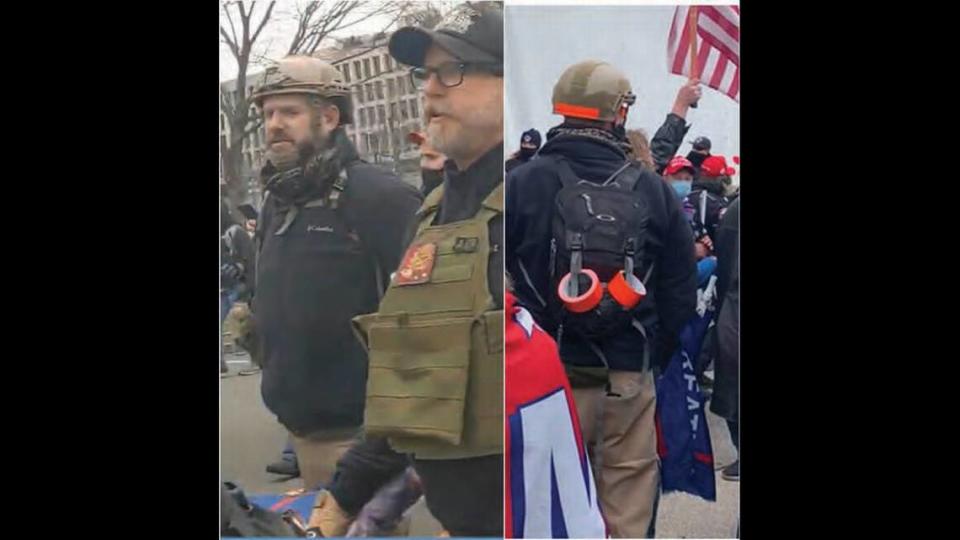
The cases of two other men are working their way through the courts. One is expected to plead guilty as early as this month and the other, William Pope of Topeka — whose case has attracted national attention over his efforts to force the government to release Capitol security footage — is set for trial in July.
Among the three dozen Missouri residents charged, 27 have pleaded guilty or have been found guilty in a bench trial before a judge. Of those, 19 have been sentenced, with nine receiving jail time ranging from 14 days to 2½ years.
Several were charged with assaulting officers. A Raytown man carried a pitchfork to the Capitol. A man from Drexel stole a baton and fought with police.
And a Kansas City man — with his mother in tow — helped other rioters push against the police line in a tunnel entryway on the Lower West Terrace of the Capitol where a Metropolitan Police officer was dragged outside, beaten and shocked with stun guns by the mob. Court documents said the man told authorities that “he brought his elderly mother to the tunnel to fully experience the moment.”
Nationwide, the arrest tally now stands at more than 1,230 from nearly all 50 states in what U.S. Attorney General Merrick Garland calls “one of the largest, most complex and most resource-intensive investigations in our history.” And prosecutors — who have two more years before the statute of limitations runs out — vow to continue tracking down the rest of those who breached the Capitol, causing nearly $2.9 million in damages.
“On January 6, 2021, the United States lost control of the grounds around its Capitol and most of the Capitol itself,” said Matthew Graves, U.S. Attorney for the District of Columbia, at a news conference Thursday acknowledging the anniversary. “Thousands of people descended on the Capitol, and hundreds of people within the mob used force and violence to overwhelm the vastly outnumbered law enforcement officers protecting the building and those who work within it.
“In scenes often reminiscent of a medieval battle, officers engaged in hand-to-hand combat with members of this invading force, many of whom carried dangerous weapons, including firearms, chemical sprays, Tasers, stabbing weapons and makeshift weapons across the Capitol grounds and in the Capitol itself. “
The siege of the Capitol, Graves said, “is likely the largest single-day mass assault of law enforcement officers in our nation’s history,” with 140 officers reporting physical injuries.
“But we know from talking to the hundreds of officers guarding the Capitol that day that this 140 number undercounts the number of officers who were physically injured, let alone those who have suffered trauma as a result of the day’s events,” he said.
Graves requested the public’s continued assistance in identifying those who committed crimes that day, “particularly the roughly 80 still unidentified individuals who are believed to have committed acts of violence against law enforcement officers.”
Statistics released Dec. 6 by the Justice Department show that of those arrested nationally so far, 714 have pleaded guilty, 210 to felonies and 504 to misdemeanors. Another 170 have been found guilty at trials. Overall, 723 defendants have been sentenced, with about 454 of them receiving periods of incarceration.
The longest sentences to date have gone to leaders of the far-right Proud Boys and Oath Keepers. Former Proud Boys chairman Henry “Enrique” Tarrio was sentenced in September to 22 years in prison for his role in the attack after he and other members were found guilty of seditious conspiracy. Some of his co-defendants received prison terms of 10 to 18 years.
And Oath Keepers founder Stewart Rhodes, who also was found guilty of seditious conspiracy, was sentenced in May to 18 years in prison.
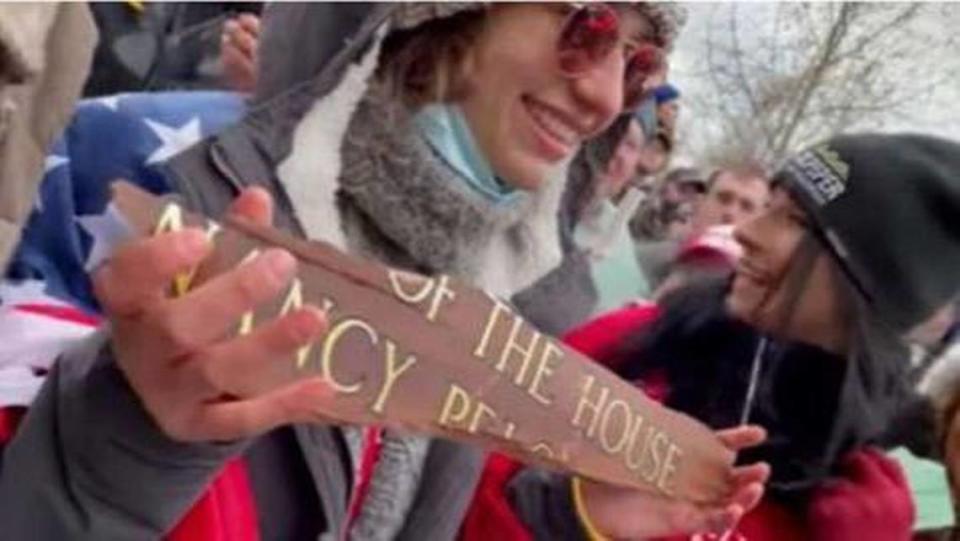
Emily Hernandez, of Sullivan, was the first Missourian to be arrested. She was charged Jan. 16, 2021, accused of possessing a wooden nameplate torn from the entrance to former House Speaker Nancy Pelosi’s office. Hernandez appeared in numerous videos and photos displaying Pelosi’s splintered nameplate like a trophy.
She pleaded guilty on Jan. 10, 2022, to one count of entering and remaining in a restricted building or grounds, a misdemeanor. She was sentenced April 11, 2022, to 30 days in jail, one year of supervised release, 80 hours of community service and $500 restitution for damage to the Capitol building.
The arrests haven’t subsided. The most recent Missouri cases involve Jared Luther Owens, of Farmington, and Jason William Wallis, of St. Clair, charged Oct. 26 with obstruction of law enforcement during a civil disorder and assault on law enforcement with a deadly or dangerous weapon, both felonies. The two also face six misdemeanor offenses. Records show the men are being held in the Correctional Treatment Facility in Washington, D.C., pending trial.
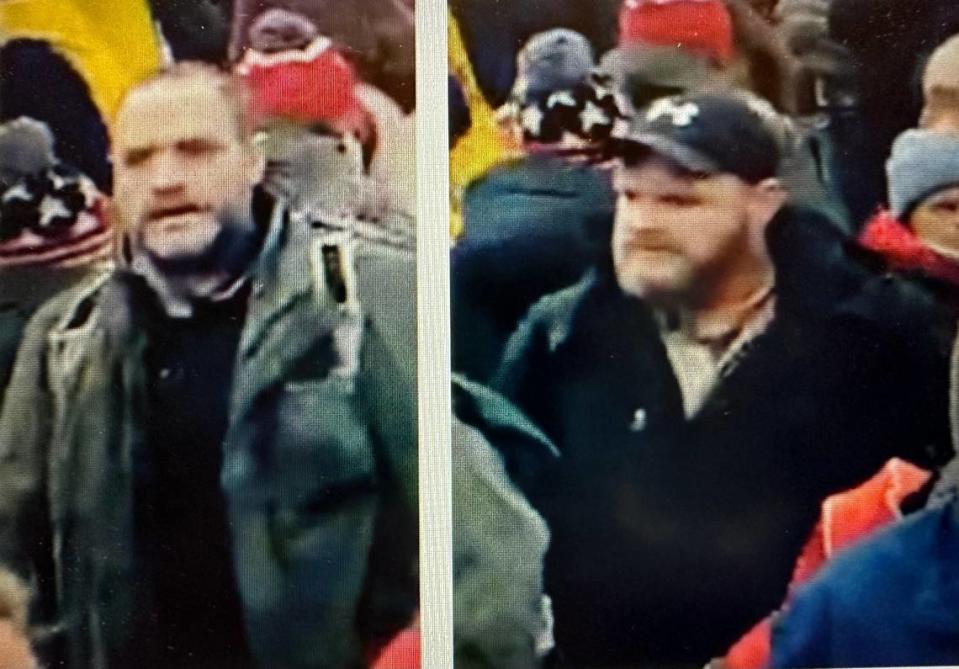
Many of the defendants expressed remorse during their sentencing hearings.
Jonas Buxton, of St. Charles, who holds a bachelor’s degree in physics, was sentenced in December 2022 to 18 months’ probation after pleading guilty to a single count of parading, demonstrating or picketing in a Capitol building.

At his sentencing, Buxton told Senior U.S. District Judge John D. Bates: “I sincerely regret the fact that I participated in an event that has done so much harm. My love for this country extends to its institutions and to its buildings, and the fact that I played any small participation in an event that has done harm to those is something that I sincerely regret.”
And Kasey Hopkins, a Kansas City, Kansas, window contractor, was sentenced in April to four months’ incarceration and two years’ probation after pleading guilty to a “parading” count.
“I’m ridiculously ashamed to be here right now,” he told U.S. District Judge Tanya S. Chutkan at his sentencing, but added that he was not the man he used to be. “If there’s any takeaway from January 6, it was that I allowed myself to get caught up — and bringing fear to people is something that goes against everything I am.”
Other defendants, however, changed their tunes after they were sentenced. Zachary Martin, of Springfield, who was turned in by a family member and charged along with some friends, got three years’ probation after pleading guilty to a misdemeanor “parading” count.
At his sentencing in March 2022, he told U.S. District Judge Dabney Friedrich: “It’s just been really hard, and I can’t believe that I made the decision to do what I did that day. I just want you to know that I just am truly sorry. It is just totally embarrassing to be here right now.”
But during an interview last Fourth of July weekend at the “J6 Truth and Light Freedom Festival” in Rogersville, held to support Jan. 6 defendants, Martin wasn’t apologetic.
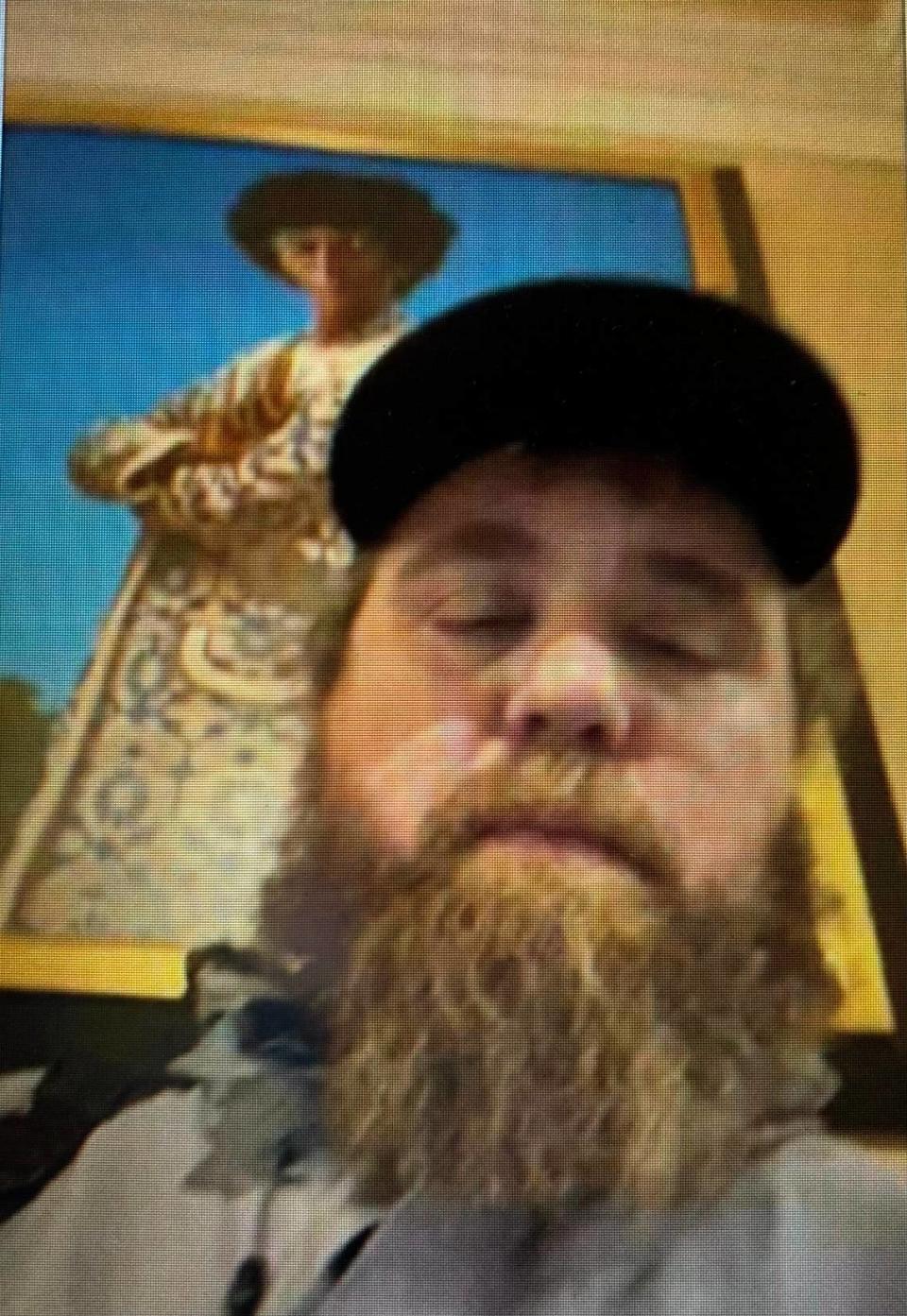
“I’m not remorseful for standing up for what I believe in,” Martin said in the interview, which was posted on Rumble, an online video-sharing platform. “I believe that the election was stolen. I believe it was fraudulent and has been for a long time. I think people should just wake up to it and stand up to it and don’t be afraid.”
Many Trump supporters continue to insist that federal agents instigated the riot, calling Jan. 6 a “Fedsurrection.”
Pope, the Topeka man charged with multiple felonies, has been at the forefront of the push to make Capitol surveillance footage from Jan. 6 public.
Representing himself in his case, Pope has filed a series of motions requesting the release of videos that he says include footage of undercover Metropolitan Police officers inciting protesters to breach the Capitol.
“Had the government not prosecuted non-violent January 6 protestors so viciously, and for so long, they might have gotten away with the J6 Fedsurrection,” Pope posted Dec. 31 on X, formerly known as Twitter. “But because they raised the stakes for so many Americans and put January 6 in the spotlight for so long, they will be exposed.”
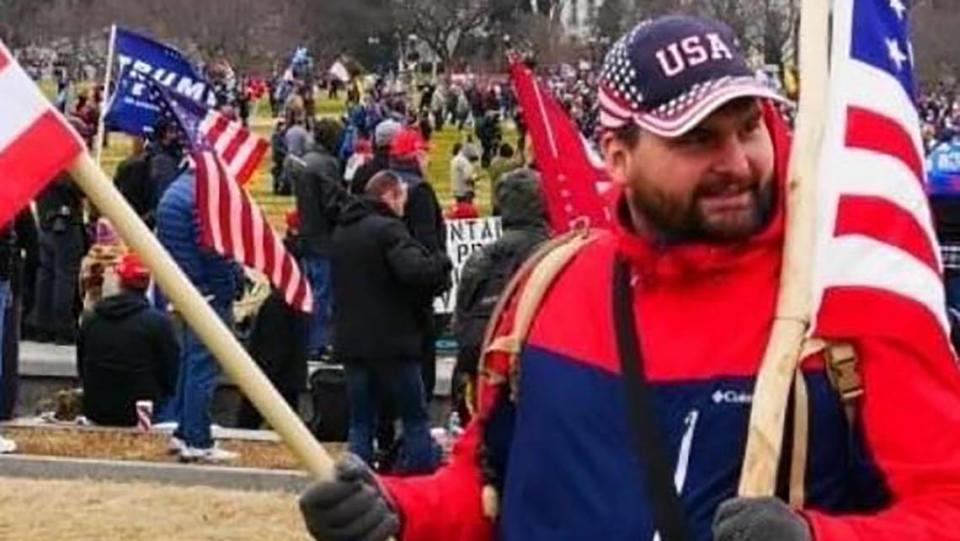
The government has argued that the Capitol surveillance videos have been designated “sensitive” and “highly sensitive” and that it would be a matter of “grave national security” to make them public.
In November, newly elected House Speaker Mike Johnson said he would publicly release thousands of hours of the footage, saying in a statement that it would “provide millions of Americans, criminal defendants, public interest organizations, and the media an ability to see for themselves what happened that day, rather than having to rely upon the interpretation of a small group of government officials.”
About 90 hours of footage that had already been released to media outlets was posted on a public website on Nov. 17, with the rest of the 44,000 hours expected to be released over the next several months.
In December, however, Johnson said House Republicans were going to blur the faces of some participants before the remainder of the videos were released “because we don’t want them to be retaliated against and to be charged by the DOJ and to have other, you know, concerns and problems.”
Now, it’s unclear when the releases will occur.
Meanwhile, Trump is fighting battles of his own in connection with Jan. 6. He was indicted on four felony counts in August for plotting to overturn the results of the 2020 election and recently has been banned from being on the 2024 primary ballots in Colorado and Maine. Trump has appealed the Maine case in state court and on Wednesday asked the U.S. Supreme Court to keep him on the ballot in Colorado.
The early front-runner for the 2024 Republican nomination, Trump has repeatedly said that if he wins back the presidency in November, he will pardon many Jan. 6 defendants, whom he refers to as political prisoners.
Some who monitor extremist groups say fallout from Jan. 6 raises multiple concerns as the country heads into the election year.
“There are a bunch of different scenarios and factors that are going to be coming together this year,” said Daryl Johnson, a former senior analyst for domestic terrorism with the Department of Homeland Security. “Trump is being taken off the ballot in some states, he’s still going around the country stirring people up about immigration and he’s also got these different indictments going on.
“Any one of these things could be triggering to some of his followers. If he gets convicted, if he is not allowed to run, they see that as a deep state coming after a patriotic president who is trying to do the right thing and clean the swamp.”
And that could provoke someone to retaliate, Johnson said, against government agencies like the Justice Department or FBI.
“The biggest thing that I see that’s kind of occurring in the background, and I see evidence of it getting more frequent or potentially more violent, is targeting of elected officials,” he said. “It could be the ‘60s all over again.”

